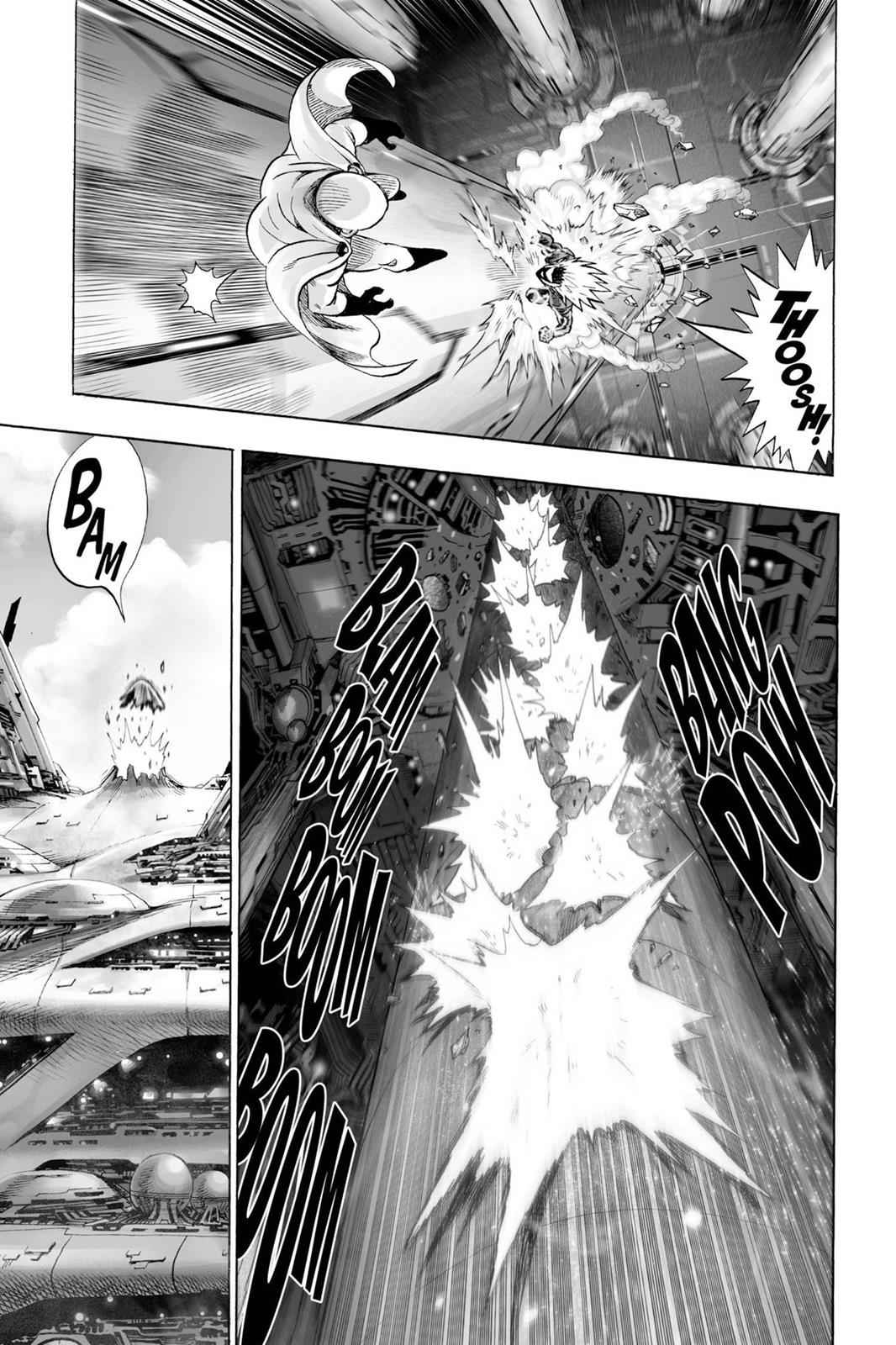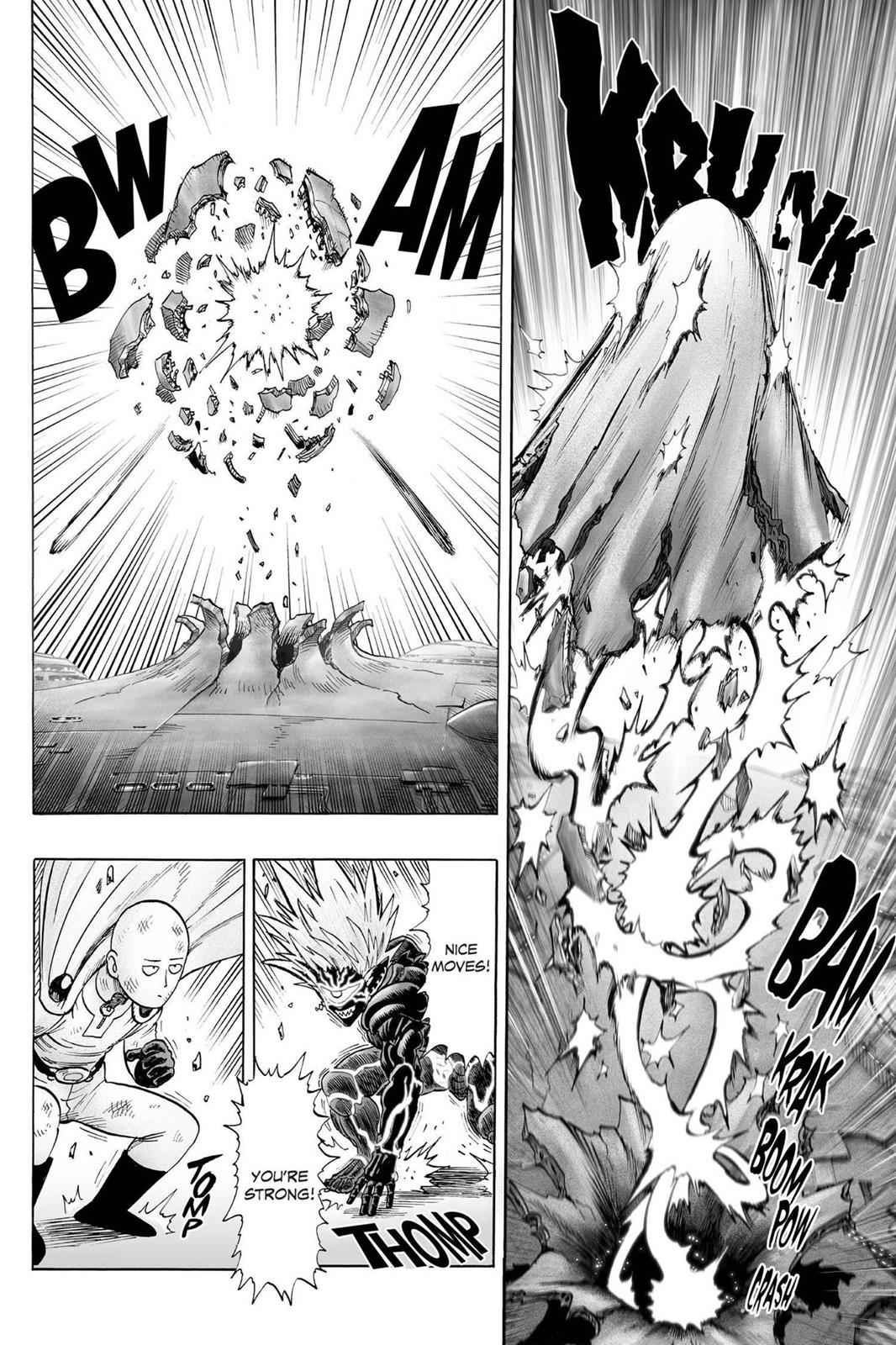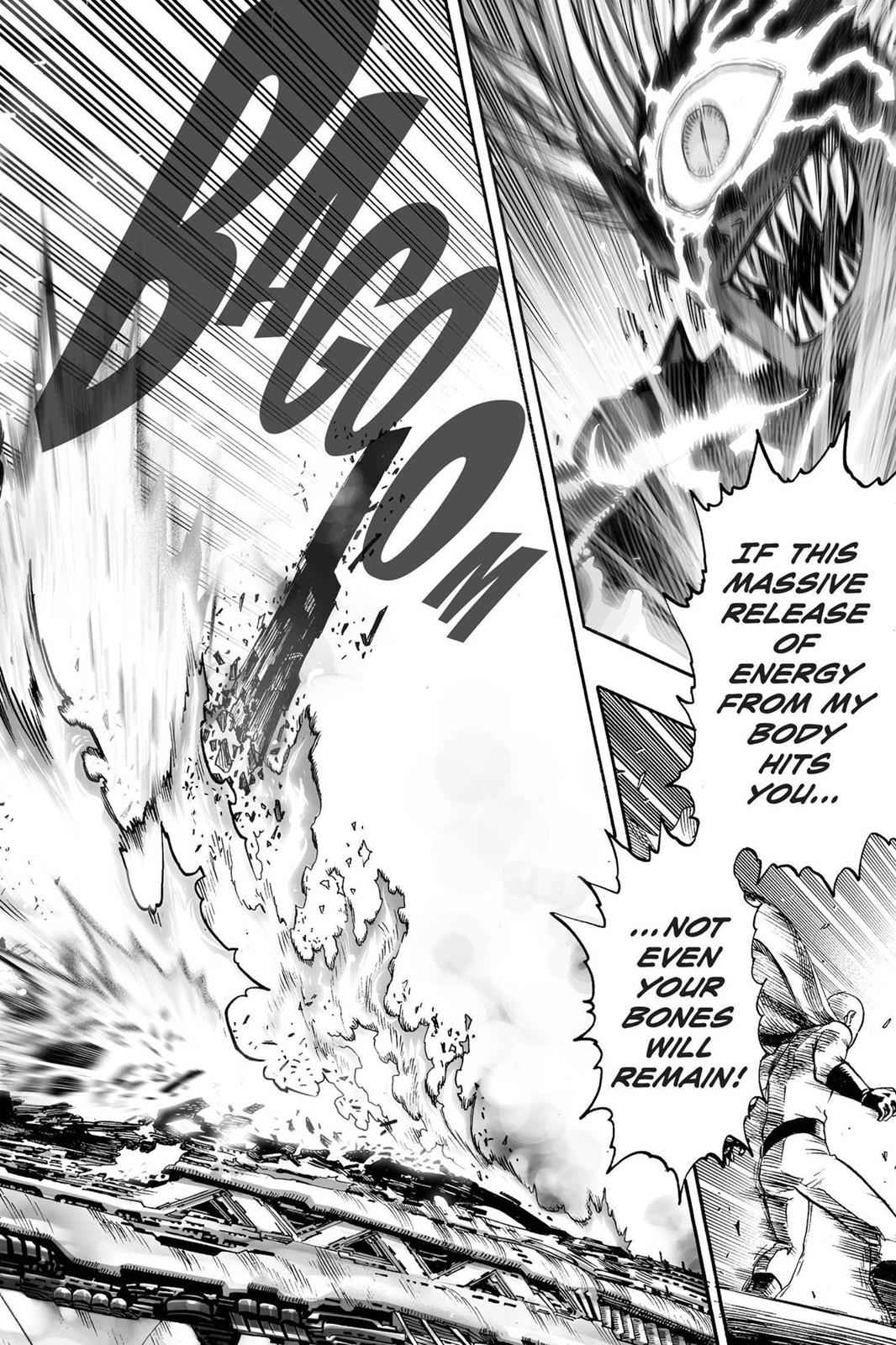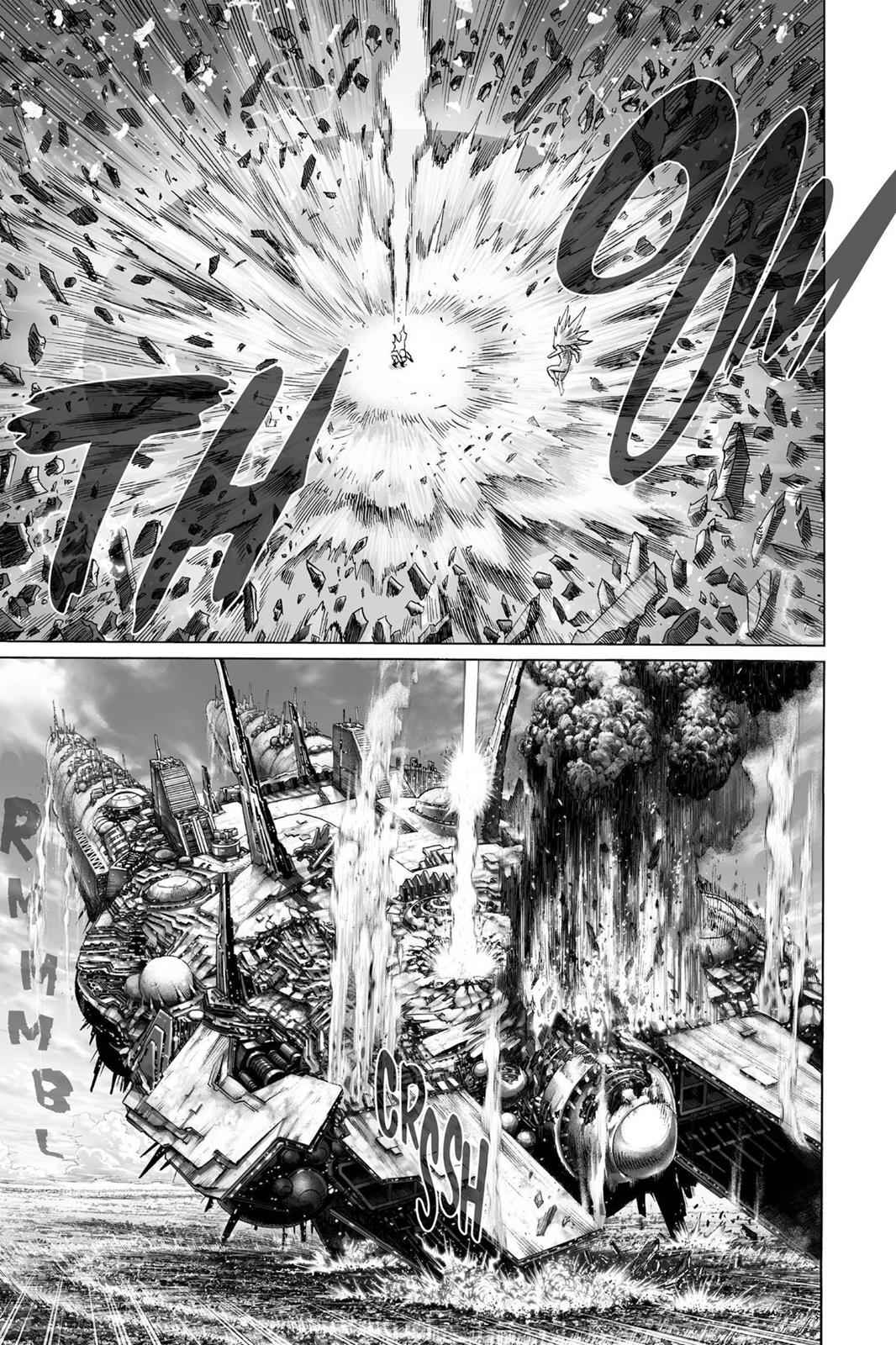- 7,200
- 2,180
My issue with ship scaling is that it was damaged way more at levels far beneath the power Saitama generated from jumping off the moon, which is then used to scale under these feats.





If anything, it should have been easier for Saitama to jump onto the ship to penetrate the material, as he was working with gravity. Saitama and Armor-Released Boros were able to break through the ship and heavily fragment the pieces while opposing gravity. Saitama's jump only made a deep crater. He caused visibly less damage to the ship than any of the previous attacks, but he did knock the ship out of its floating mode. A calculation could be done to determine the potential energy of the ship and get a result from that. It did fall from that height, but the damage looked unimpressive so..
The second issue is using the jump to justify the ship's durability. Making the entire ship's durability equal to the jump is weird for four reasons:
1. It assumes that 0 energy was lost between the moon and the ship. The crater was made via kinetic energy, and KE is rapidly lost over distance with a reduction of speed. The only way this is possible is if Saitama teleported.
The damage (or lack thereof) he causes to the ship shows the massive amount of energy lost, given the surface area on the moon he destroyed is roughly as large as India. His casual combat with Boros that destroyed the ship < the punch that destroyed the meteor which would've destroyed city z and surrounding areas ≤ the moon jump < serious punch.
2. It assumes the entire ship is equally durable across the entire surface area even though we've seen casual combat between the two break holes into the ship, as well as Tatsumaki causing damage with their own bombardment being thrown at them. Since the jump damage is being scaled below every other feat, we are also saying Saitama is casually throwing 6-A punches left and right, when he had to charge up to jump off the moon. That isn't the case.
3. The ship's power core didn't break until CSRC and serious punch was used.
4. Most importantly, a giant, smoking crater in the ship or walls getting easily blasted apart does not fit our criteria for durability at all. It means the exact opposite - the material failed to withstand the KE of the jump and the potential energy of the ship was overcome. Meaning, the durability of the ship is lower than these feats. Durability is especially easy to define in solid mechanics.





If anything, it should have been easier for Saitama to jump onto the ship to penetrate the material, as he was working with gravity. Saitama and Armor-Released Boros were able to break through the ship and heavily fragment the pieces while opposing gravity. Saitama's jump only made a deep crater. He caused visibly less damage to the ship than any of the previous attacks, but he did knock the ship out of its floating mode. A calculation could be done to determine the potential energy of the ship and get a result from that. It did fall from that height, but the damage looked unimpressive so..
The second issue is using the jump to justify the ship's durability. Making the entire ship's durability equal to the jump is weird for four reasons:
1. It assumes that 0 energy was lost between the moon and the ship. The crater was made via kinetic energy, and KE is rapidly lost over distance with a reduction of speed. The only way this is possible is if Saitama teleported.
The damage (or lack thereof) he causes to the ship shows the massive amount of energy lost, given the surface area on the moon he destroyed is roughly as large as India. His casual combat with Boros that destroyed the ship < the punch that destroyed the meteor which would've destroyed city z and surrounding areas ≤ the moon jump < serious punch.
2. It assumes the entire ship is equally durable across the entire surface area even though we've seen casual combat between the two break holes into the ship, as well as Tatsumaki causing damage with their own bombardment being thrown at them. Since the jump damage is being scaled below every other feat, we are also saying Saitama is casually throwing 6-A punches left and right, when he had to charge up to jump off the moon. That isn't the case.
3. The ship's power core didn't break until CSRC and serious punch was used.
4. Most importantly, a giant, smoking crater in the ship or walls getting easily blasted apart does not fit our criteria for durability at all. It means the exact opposite - the material failed to withstand the KE of the jump and the potential energy of the ship was overcome. Meaning, the durability of the ship is lower than these feats. Durability is especially easy to define in solid mechanics.
In mechanics, compressive strength (or compression strength) is the capacity of a material or structure to withstand loads tending to reduce size (as opposed to tensile strength which withstands loads tending to elongate). In other words, compressive strength resists compression (being pushed together), whereas tensile strength resists tension (being pulled apart).